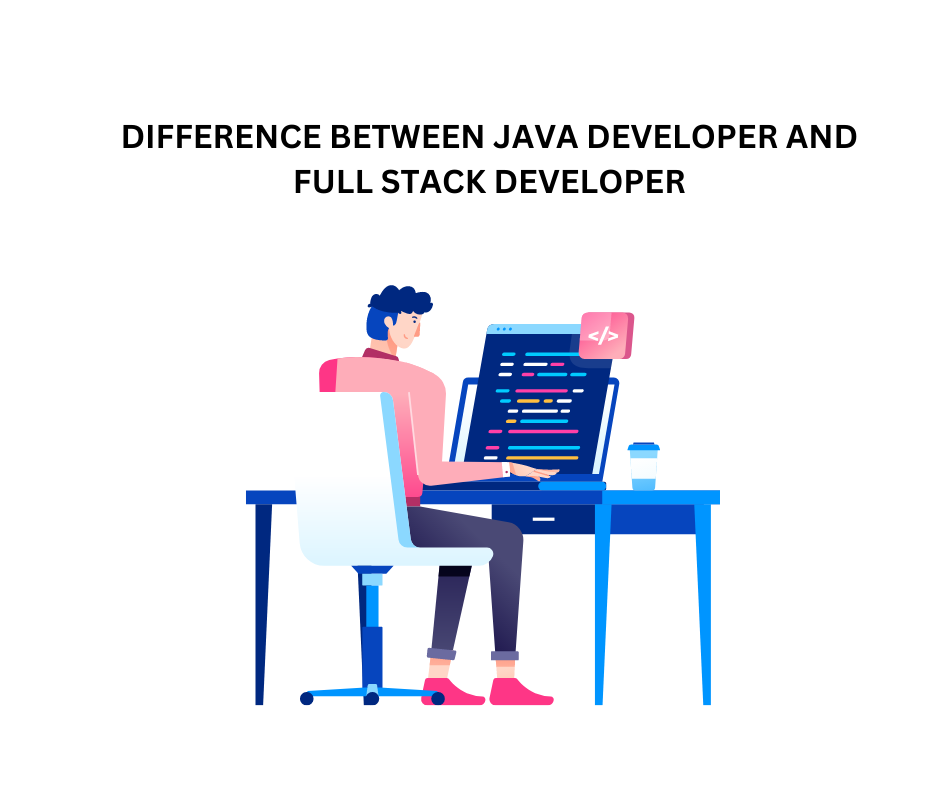Introduction To Java
Are you curious about the differences between a Java developer and a Full Stack Java Developer? Java is an incredibly popular programming language and an essential skill for any programmer looking to develop web or mobile applications. A Java developer is responsible for writing code using the object-oriented concepts of Java language. They are often tasked with developing applications that run on multiple platforms, such as Windows, Linux, Mac OS X, and Android phones. Additionally, they must be knowledgeable in debugging errors in their software code.
Full Stack Java Developers are responsible for end-to-end development tasks, such as designing and implementing databases, working on business layer and backend services, and frontend development using JavaScript technologies. They should have comprehensive knowledge of technologies such as HTML, CSS, JavaScript, JDBC, JSP, Servlets, SQL, frameworks such as Angular, React, Spring, public cloud services like AWS, Azure, communication problem-solving and debugging skills, tools used in java development like Eclipse, IntelliJ, NetBeans, Maven, Gradle, Ant, Jenkins, CI/CD tools, Docker, Kubernetes, design patterns used in java like MVC, Factory, Abstract, Singleton, Builder, Prototype, Command, Observer, Iterator, Visitor, Mediator, State, Strategy, Facade, Template, Adapter, Bridge, Decorator, Proxy, Chain Of Responsibility, Flyweight, Interpreter, Null Object, Dependency Injection (DI), Service Locator, Blackboard, Publish Subscribe, Model View Controller (MVC), Model View Presenter (MVP), Domain Driven Design (DDD), and Test-Driven Development (TDD), and all other benefits associated with utilizing java for web or mobile programs.
Understanding The Role Of The Java Developer
The role of a Java Developer is to create and maintain software applications for businesses and companies. Java Developers use the programming language of Java to create applications that are used by businesses, governments, educational institutions, and other organizations. Understanding the role of a Java Developer can help you decide if this career path is right for you. Are you looking to elevate your career as a full-stack developer? Look no further! Kelly technologies is now offering Java Full Stack Developer Course in Hyderabad.
A Java Developer is responsible for designing, coding, and testing code across both the front end and back end of websites or applications. This includes creating database layer objects, working on the business layer, creating front-end designs, as well as debugging any issues that arise throughout development. In order to do this effectively, they must have an extensive knowledge of the language features, frameworks, and databases used in their projects.
The primary duties of a Java Developer are to develop websites and applications according to client requirements while utilizing multiple programming languages such as HTML5, CSS3, or JavaScript when necessary. They may also be required to design programs such as games or finance programs using the programming language of Java to meet customer needs or solve specific problems within an organization’s workflow processes. With their vast knowledge base, a full-stack Java developer has all-round expertise with web development tools from databases through server-side scripting languages like PHP and NodeJS all way up until client-side scripting languages such as JavaScript and jQuery – making them invaluable assets for any project!
What Does A Java Developer Do?
Are you interested in becoming a Java Developer? If so, it is important to understand the differences between this role and that of a Full Stack Developer. Although both roles use the same technology stack, there are several distinct differences in their tasks and responsibilities.
What a Full Stack Developer does. As the name suggests, they are responsible for creating and maintaining web applications from end to end. This includes both front-end development such as HTML, JavaScript, and CSS as well as back-end development such as Java. They are often team leads who manage other developers working on the project. Additionally, they may work directly with companies or take on freelance assignments for individual projects.
On the other hand, Java Developers are a subset of Full Stack Developers that focus more heavily on back-end development using only the Java language. They do not typically work on front-end components such as user interfaces but rather focus their efforts primarily on back-end development using technologies like Spring Boot or Hibernate frameworks, etc. In order to be successful in this role, it requires extensive knowledge of programming fundamentals related to object-oriented design patterns and software engineering principles combined with experience with web application design principles and practices, including MVC architecture pattern, etc.
The project lifecycle for each role differs slightly depending on their specific responsibilities within the project scope, but generally speaking, they both involve gathering requirements from stakeholders; designing databases; developing code; testing; deploying applications; providing ongoing maintenance throughout its lifecycle, etc. For example, full-stack developers will be more involved with creating user interfaces whereas Java developers will be focused more closely on writing code for server-side components such as APIs or services based upon stakeholder requirements, which can vary depending on each individual project type.
Understanding The Specialties Of A Java Developer
Are you curious about the difference between a Java Developer and a Full Stack Developer? It’s important to understand the specialties of each type of developer when considering which job is right for you. Here we’ll explore the different skills required for each job and provide an overview of the tools and programming languages used in each role.
For Java Developers, understanding core concepts of object-oriented programming (OOP) is essential. This includes grasping classes, objects, variables, methods, data abstraction, and encapsulation. A solid understanding of OOP enables Java Developers to create complex programs with fewer lines of code than other programming languages require.
Full stack developers have knowledge in multiple areas such as frontend development (HTML/CSS/Javascript), backend development (PHP/Python), databases (MySQL/MongoDB), as well as UI/UX design principles. They can develop applications from start to finish and readily switch between different technologies, depending on what’s needed for a project.
When developing an application or website, various roles are involved, with frontend developers creating visual aspects such as buttons and graphics, while backend developers work on server-side processes like authentication or database management. Full stack developers have expertise in both these areas, allowing them to handle both sides without needing additional support from other team members – making them more valuable than just hiring separate specialists for front-end or back-end alone! Additionally, full stack developers can use their knowledge in different areas like DevOps engineering or mobile app development if needed.
Conclusion
The main benefit of hiring a full stack developer over just a Java developer is that you get someone who has expertise across multiple technologies, rather than focusing only on one specific language like Java. This allows them to be more flexible in terms of handling tasks related not only specifically for your project but also any potential changes that may need attention down the line too! Additionally, full stack developers are responsible for the entire development process from design to implementation, which helps streamline projects efficiently while keeping costs low – something every business should appreciate! This article khatri-maza must have given you a clear understanding of the topic Java.





